Cucumber growing mistakes – we’ve all been there! You envision a summer overflowing with crisp, refreshing cucumbers, perfect for salads, pickles, and snacking. But then reality hits: yellowing leaves, misshapen fruits, or worse, no cucumbers at all! Don’t worry, you’re not alone. Growing cucumbers can be tricky, but with a little know-how, you can avoid common pitfalls and enjoy a bountiful harvest.
Cucumbers have a rich history, dating back thousands of years to their origins in India. They’ve been cultivated and enjoyed by cultures around the world, from ancient Egyptians to Roman emperors. Today, they remain a staple in gardens and kitchens everywhere. But even with centuries of cultivation, cucumber growing mistakes still plague even experienced gardeners.
Why is it so important to avoid these mistakes? Because homegrown cucumbers taste infinitely better than store-bought ones! Plus, gardening is a fantastic way to connect with nature, reduce stress, and enjoy fresh, healthy produce. This article is your guide to avoiding the most common errors that can sabotage your cucumber crop. I’ll share practical tips and DIY solutions to help you troubleshoot problems, optimize your growing conditions, and finally achieve that cucumber abundance you’ve been dreaming of. Let’s get started and turn those cucumber dreams into a delicious reality!
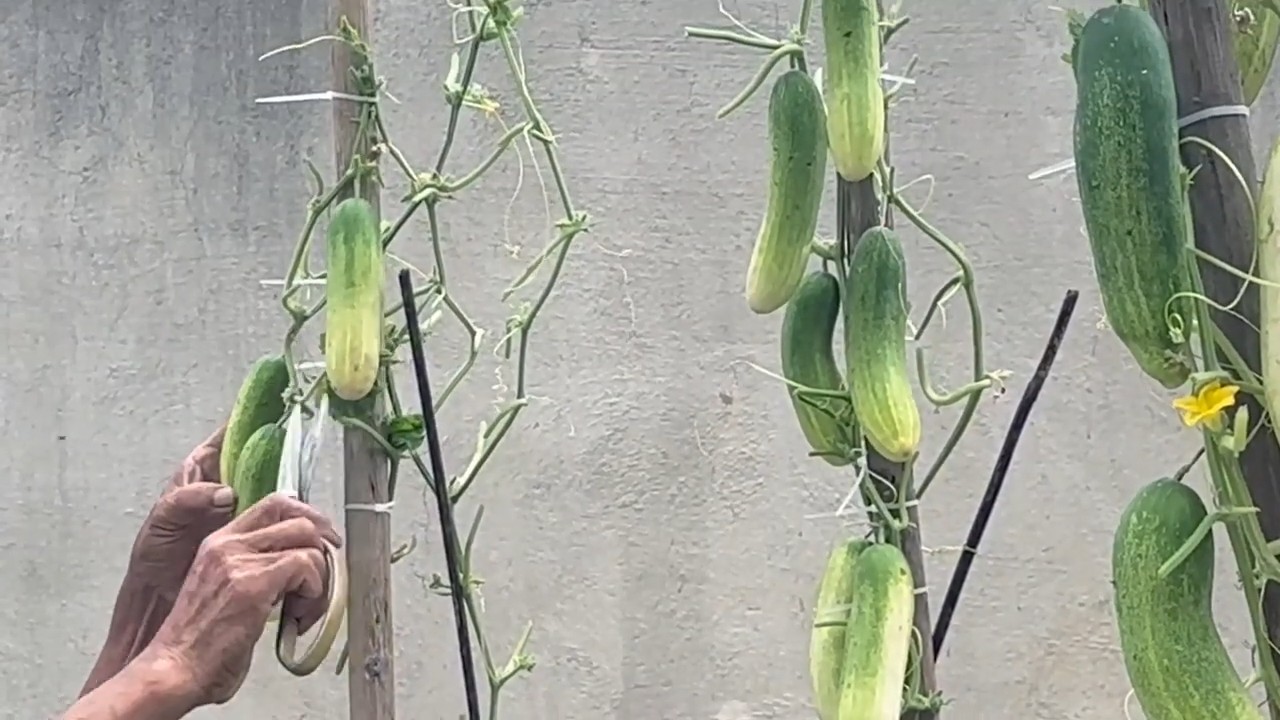
Growing Cucumbers Made Easy: Avoid These Common Mistakes for a Bountiful Harvest!
Hello dear garden friends! I’m so excited to guide you through the world of growing cucumbers today. Cucumbers are simply fantastic – crisp, refreshing, and versatile. But let’s be honest, sometimes they can be quite fussy. Don’t worry, I’ve made all the common mistakes in growing cucumbers myself and have learned how to avoid them. With my tips and tricks, you’ll soon be bringing in a bountiful cucumber harvest!
The Most Common Mistakes in Cucumber Growing and How to Avoid Them:
- Wrong Variety Choice: Not every cucumber variety is suitable for every location. Find out which varieties thrive in your region.
- Wrong Location: Cucumbers love the sun! A shady spot leads to stunted growth and low yield.
- Poor Soil: Cucumbers are heavy feeders and need nutrient-rich, well-draining soil.
- Incorrect Watering: Too little or too much water can lead to problems. Cucumbers need consistent watering.
- Lack of a Trellis: Cucumbers are climbing plants and need a support to grow optimally.
- Incorrect Fertilizing: Too much or too little fertilizer can be harmful. Ensure a balanced fertilization.
- Neglecting Care: Regular pruning of side shoots and removing yellow leaves promotes the plant’s health.
- Harvesting Too Late: Cucumbers that are too large become bitter and lose their flavor. Harvest regularly!
- Diseases and Pests: Watch for signs of diseases and pests and act early.
- Monoculture: Cucumbers should not be grown in the same spot every year to prevent diseases.
Growing Cucumbers Correctly: A Step-by-Step Guide
Now I’ll show you how to do it right. Don’t worry, it’s easier than you think!
1. Choosing the Right Variety
Before you start, you need to decide on the right cucumber variety. There are slicing cucumbers, pickling cucumbers, English cucumbers, and many more. Think about what you want to do with the cucumbers and choose the appropriate variety accordingly. Also, make sure the variety is suitable for your climate. I personally love “Marketmore 76” for salads and “Delikatess” for pickling.
2. Finding the Perfect Location
Cucumbers love the sun! Look for a sunny spot in your garden that gets at least 6-8 hours of sun per day. The soil should be loose, rich in humus, and well-draining. Avoid waterlogging, as cucumbers do not like that at all.
3. Preparing the Soil
Good soil is the key to a rich cucumber harvest. Loosen the soil thoroughly and remove weeds. Mix in compost or well-rotted manure to enrich the soil with nutrients. I also like to add some horn shavings, which is a great slow-release fertilizer.
4. Starting Cucumbers Indoors or Direct Sowing?
You have the choice! You can either start the cucumbers indoors or sow them directly in the open ground. Starting them indoors has the advantage that the plants get a head start and bear fruit earlier. I usually start my cucumbers indoors because I’m impatient and can hardly wait to harvest the first ones.
- Starting Indoors: Sow the seeds about 3-4 weeks before the last frost in small pots with seed starting mix. Keep the soil moist and place the pots in a warm, bright place. Once the plants are large enough, you can transplant them outdoors.
- Direct Sowing: Sow the seeds directly in the open ground as soon as there is no more danger of frost. Make sure the soil is warm. Place the seeds about 2-3 cm deep in the soil and keep the soil moist.
5. Planting the Cucumbers
If you have started the cucumbers indoors, you can transplant them into the open ground as soon as there is no more danger of frost. Make sure the soil is warm. Plant the cucumbers at a distance of about 50-60 cm. If you are planting several rows, you should leave a distance of about 1 meter between the rows.
6. Building a Trellis
Cucumbers are climbing plants and need a support to grow optimally. You can use a fence, a trellis, or an obelisk. I built a simple trellis for myself out of bamboo sticks and wire. The cucumber plants will thank you and climb up the support.
7. Watering Correctly
Cucumbers need consistent watering. Water the plants regularly, especially during the flowering and fruiting period. Avoid waterlogging, as cucumbers do not like that at all. It’s best to water in the morning or evening so that the water doesn’t evaporate as quickly. I always water my cucumbers directly at the root so that the leaves don’t get wet.
8. Fertilizing Correctly
Cucumbers are heavy feeders and need sufficient nutrients. Fertilize the plants regularly with an organic fertilizer. I like to use compost tea or nettle manure. Make sure that the fertilizer is not too high in nitrogen, as this promotes leaf growth but not fruit formation.
9. Pruning Cucumbers
Pruning involves removing side shoots to encourage the formation of fruits. Remove the side shoots that grow from the leaf axils. But leave the main stems, because that’s where the cucumbers grow. I just pinch off the side shoots with my fingers.
10. Harvesting Regularly
Harvest the cucumbers regularly as soon as they reach the desired size. Cucumbers that are too large become bitter and lose their flavor. Cut the cucumbers with a sharp knife so as not to damage the plant. The more often you harvest, the more cucumbers will grow back.
Additional Tips for a Bountiful Cucumber Harvest
- Mulching: Mulch the soil around the cucumber plants with straw or grass clippings. This keeps the soil moist and suppresses weeds.
- Pest Control: Watch for signs of pests like aphids or spider mites. Combat the pests early with natural remedies like nettle manure or a soft soap solution.
- Preventing Diseases: Watch for signs of diseases like powdery mildew or cucumber mosaic virus. Remove affected leaves immediately and ensure good ventilation for the plants.
- Practice Crop Rotation: Do not plant cucumbers in the same spot every year to prevent diseases. Rotate your planting areas regularly.
- Encourage Pollination: Cucumbers rely on pollination by bees and other insects. Encourage pollination by planting bee-friendly plants near the cucumbers.
Common Problems and Solutions
No Fruits: If the cucumber plants are not producing fruit, it may be due to a lack of pollination. Encourage pollination by planting bee-friendly plants.
Yellow Leaves: Yellow leaves can have various causes, such as nutrient deficiency, lack of water, or diseases. Check the soil moisture and fertilize the plants if necessary. Remove affected leaves.
Bitter Cucumbers: Bitter cucumbers can be caused by stress, e.g., from lack of water, heat stress, or irregular watering. Ensure consistent watering and protect the plants from extreme heat.
Crooked Cucumbers: Crooked cucumbers can be caused by uneven watering or nutrient deficiency. Ensure consistent watering and fertilize the plants regularly.
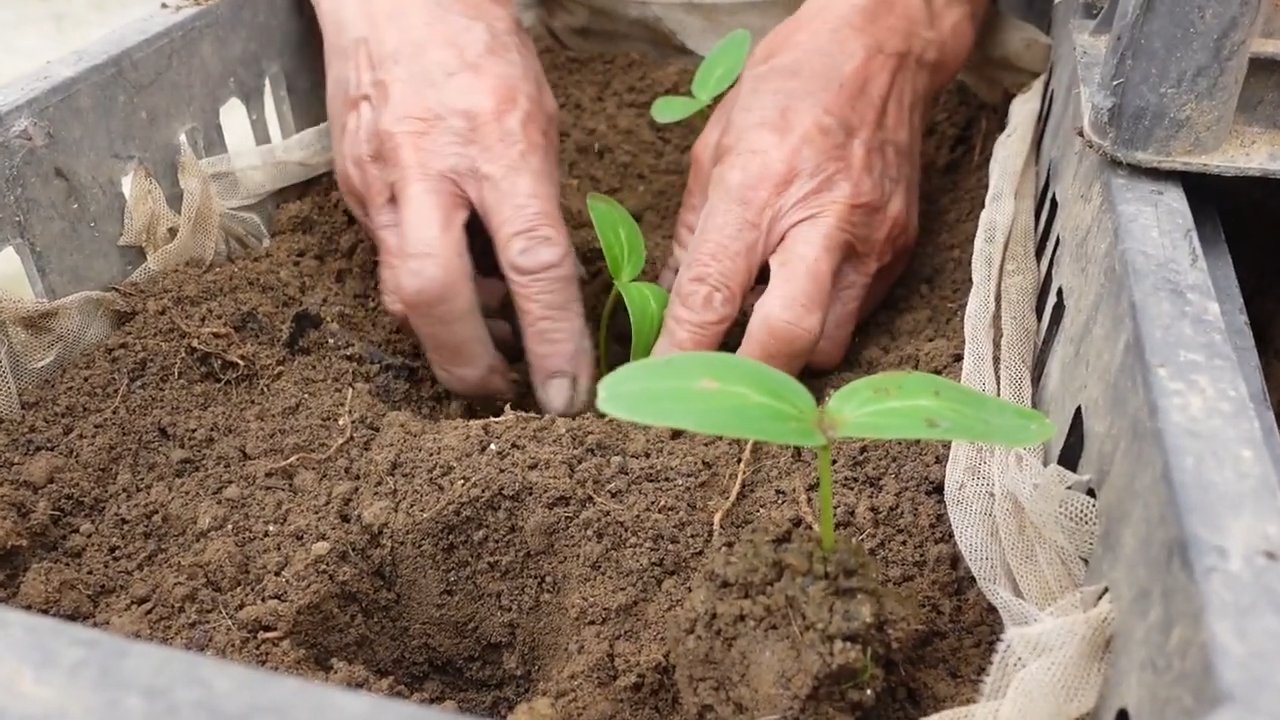
Conclusion
So, there you have it! Avoiding these common cucumber growing mistakes is the key to unlocking a bountiful harvest of crisp, delicious cucumbers right from your own garden. We’ve covered everything from soil preparation and watering techniques to pest control and pollination strategies. Ignoring these crucial aspects can lead to stunted growth, bitter fruits, and a whole lot of frustration.
But don’t let that discourage you! Growing cucumbers can be incredibly rewarding, and with a little knowledge and attention, you can easily avoid these pitfalls. Remember, the secret lies in providing your cucumber plants with the right environment, consistent care, and a watchful eye.
Think of it this way: properly preparing your soil with plenty of organic matter is like laying the foundation for a strong and healthy plant. Consistent watering, especially during fruiting, is like providing the fuel it needs to produce those juicy cucumbers. And protecting your plants from pests and diseases is like ensuring they can thrive without unnecessary stress.
Consider these variations to further enhance your cucumber growing experience:
* Vertical Growing: If you’re short on space, try growing your cucumbers vertically on a trellis or fence. This not only saves space but also improves air circulation and reduces the risk of fungal diseases.
* Companion Planting: Plant cucumbers alongside beneficial companions like marigolds, nasturtiums, or dill to deter pests and attract pollinators.
* Pickling Varieties: If you’re a fan of pickles, choose cucumber varieties specifically bred for pickling, such as ‘National Pickling’ or ‘Boston Pickling.’
* Lemon Cucumbers: For a unique twist, try growing lemon cucumbers. These round, yellow cucumbers have a mild, slightly sweet flavor.
* Experiment with different fertilizers: Try different organic fertilizers to see which works best for your soil and cucumber variety. Compost tea, fish emulsion, and seaweed extract are all excellent options.
Ultimately, the best way to learn is by doing. Don’t be afraid to experiment and adapt your approach based on your own observations and experiences. Every garden is unique, and what works for one gardener may not work for another.
We strongly encourage you to put these tips into practice and start growing your own cucumbers today. Imagine the satisfaction of harvesting your own fresh, homegrown cucumbers and using them in salads, sandwiches, or even homemade pickles.
And most importantly, we want to hear about your experiences! Share your successes, your challenges, and any tips or tricks you’ve learned along the way in the comments section below. Let’s create a community of cucumber-growing enthusiasts and learn from each other. Your insights could be invaluable to other gardeners who are just starting out. So, get your hands dirty, avoid those cucumber growing mistakes, and enjoy the fruits (or rather, vegetables) of your labor!
Frequently Asked Questions (FAQ)
Why are my cucumber plants producing flowers but no fruit?
This is a common issue, and there are several potential causes. One of the most frequent reasons is inadequate pollination. Cucumbers are typically pollinated by bees and other insects. If you’re not seeing many pollinators in your garden, you may need to hand-pollinate your cucumber flowers. To do this, use a small paintbrush to transfer pollen from the male flowers (which have a straight stem behind the flower) to the female flowers (which have a small cucumber-like structure behind the flower). Another possible cause is stress, such as extreme temperatures, lack of water, or nutrient deficiencies. Ensure your plants are getting consistent moisture and are fertilized appropriately. Also, some cucumber varieties are gynoecious, meaning they produce mostly female flowers. These varieties often require a pollinator variety planted nearby to ensure adequate pollination.
My cucumber leaves are turning yellow. What’s wrong?
Yellowing leaves, also known as chlorosis, can indicate a variety of problems. Overwatering is a common culprit, as it can lead to root rot and prevent the plant from absorbing nutrients properly. Make sure your soil is well-draining and avoid watering too frequently. Nutrient deficiencies, particularly nitrogen, magnesium, or iron, can also cause yellowing leaves. Test your soil and amend it with appropriate fertilizers. Pests, such as spider mites or aphids, can also suck the sap from leaves, causing them to turn yellow. Inspect your plants regularly for pests and treat them accordingly. Finally, fungal diseases like powdery mildew or downy mildew can also cause yellowing leaves. Ensure good air circulation around your plants and treat them with a fungicide if necessary.
How often should I water my cucumber plants?
Cucumbers need consistent moisture, especially during fruiting. As a general rule, water deeply whenever the top inch of soil feels dry to the touch. This may mean watering every day or every other day, depending on the weather and soil conditions. Avoid overhead watering, as this can promote fungal diseases. Instead, water at the base of the plant, using a soaker hose or drip irrigation system. Mulching around your cucumber plants can also help retain moisture and reduce the need for frequent watering. Remember that underwatering can lead to bitter fruits, so it’s crucial to maintain consistent moisture levels.
What are the best fertilizers for cucumber plants?
Cucumbers are heavy feeders and benefit from regular fertilization. A balanced fertilizer with a ratio of 10-10-10 or 14-14-14 is a good starting point. However, during fruiting, you may want to switch to a fertilizer with a higher potassium content, such as 5-10-10, to promote fruit development. Organic fertilizers, such as compost tea, fish emulsion, and seaweed extract, are also excellent options. These fertilizers provide a slow-release source of nutrients and improve soil health. Avoid over-fertilizing, as this can lead to excessive foliage growth and reduced fruit production. Follow the instructions on the fertilizer label carefully.
How do I deal with pests on my cucumber plants?
Pests can be a major problem for cucumber growers, but there are several ways to manage them. Regular inspection of your plants is crucial for early detection. Common cucumber pests include aphids, spider mites, cucumber beetles, and squash bugs. For aphids and spider mites, try spraying your plants with a strong stream of water or using insecticidal soap. Cucumber beetles can be hand-picked or controlled with neem oil. Squash bugs are more difficult to control, but you can try hand-picking them or using row covers to protect your plants. Encourage beneficial insects, such as ladybugs and lacewings, to prey on pests. Companion planting with marigolds, nasturtiums, or dill can also help deter pests.
Why are my cucumbers bitter?
Bitterness in cucumbers is often caused by stress, such as inconsistent watering, extreme temperatures, or nutrient deficiencies. Cucumbers produce cucurbitacins, compounds that cause bitterness, when they are stressed. To prevent bitterness, ensure your plants are getting consistent moisture, especially during fruiting. Provide shade during the hottest part of the day and fertilize regularly. Some cucumber varieties are also more prone to bitterness than others. Choose varieties that are known for their mild flavor. You can also try peeling the cucumbers before eating them, as the bitterness is often concentrated in the skin.
When is the best time to harvest cucumbers?
The best time to harvest cucumbers depends on the variety and your personal preference. Generally, cucumbers are ready to harvest when they are firm, green, and have reached the desired size for their variety. Overripe cucumbers can become yellow, seedy, and bitter. Harvest cucumbers regularly to encourage continued production. Use a sharp knife or pruners to cut the cucumbers from the vine, leaving a short stem attached. Handle cucumbers gently to avoid bruising them.
Can I grow cucumbers in containers?
Yes, cucumbers can be grown successfully in containers, but you’ll need to choose a large container (at least 5 gallons) and provide adequate support for the vines. Use a well-draining potting mix and water regularly. Container-grown cucumbers may need more frequent fertilization than those grown in the ground. Choose bush or compact cucumber varieties for container growing, as they are less sprawling. Place your container in a sunny location that receives at least 6-8 hours of sunlight per day.
How do I prevent powdery mildew on my cucumber plants?
Powdery mildew is a common fungal disease that can affect cucumber plants. It appears as a white, powdery coating on the leaves. To prevent powdery mildew, ensure good air circulation around your plants by spacing them properly and pruning away any crowded foliage. Avoid overhead watering and water at the base of the plant instead. Choose cucumber varieties that are resistant to powdery mildew. You can also try spraying your plants with a fungicide or a homemade solution of baking soda and water.
What are some good companion plants for cucumbers?
So, there you have it! Avoiding these common cucumber growing mistakes is the key to unlocking a bountiful harvest of crisp, delicious cucumbers right from your own garden. We’ve covered everything from soil preparation and watering techniques to pest control and pollination strategies. Ignoring these crucial aspects can lead to stunted growth, bitter fruits, and a whole lot of frustration.
But don’t let that discourage you! Growing cucumbers can be incredibly rewarding, and with a little knowledge and attention, you can easily avoid these pitfalls. Remember, the secret lies in providing your cucumber plants with the right environment, consistent care, and a watchful eye.
Think of it this way: properly preparing your soil with plenty of organic matter is like laying the foundation for a strong and healthy plant. Consistent watering, especially during fruiting, is like providing the fuel it needs to produce those juicy cucumbers. And protecting your plants from pests and diseases is like ensuring they can thrive without unnecessary stress.
Consider these variations to further enhance your cucumber growing experience:
* Vertical Growing: If you’re short on space, try growing your cucumbers vertically on a trellis or fence. This not only saves space but also improves air circulation and reduces the risk of fungal diseases.
* Companion Planting: Plant cucumbers alongside beneficial companions like marigolds, nasturtiums, or dill to deter pests and attract pollinators.
* Pickling Varieties: If you’re a fan of pickles, choose cucumber varieties specifically bred for pickling, such as ‘National Pickling’ or ‘Boston Pickling.’
* Lemon Cucumbers: For a unique twist, try growing lemon cucumbers. These round, yellow cucumbers have a mild, slightly sweet flavor.
* Experiment with different fertilizers: Try different organic fertilizers to see which works best for your soil and cucumber variety. Compost tea, fish emulsion, and seaweed extract are all excellent options.
Ultimately, the best way to learn is by doing. Don’t be afraid to experiment and adapt your approach based on your own observations and experiences. Every garden is unique, and what works for one gardener may not work for another.
We strongly encourage you to put these tips into practice and start growing your own cucumbers today. Imagine the satisfaction of harvesting your own fresh, homegrown cucumbers and using them in salads, sandwiches, or even homemade pickles.
And most importantly, we want to hear about your experiences! Share your successes, your challenges, and any tips or tricks you’ve learned along the way in the comments section below. Let’s create a community of cucumber-growing enthusiasts and learn from each other. Your insights could be invaluable to other gardeners who are just starting out. So, get your hands dirty, avoid those cucumber growing mistakes, and enjoy the fruits (or rather, vegetables) of your labor!
Frequently Asked Questions (FAQ)
Why are my cucumber plants producing flowers but no fruit?
This is a common issue, and there are several potential causes. One of the most frequent reasons is inadequate pollination. Cucumbers are typically pollinated by bees and other insects. If you’re not seeing many pollinators in your garden, you may need to hand-pollinate your cucumber flowers. To do this, use a small paintbrush to transfer pollen from the male flowers (which have a straight stem behind the flower) to the female flowers (which have a small cucumber-like structure behind the flower). Another possible cause is stress, such as extreme temperatures, lack of water, or nutrient deficiencies. Ensure your plants are getting consistent moisture and are fertilized appropriately. Also, some cucumber varieties are gynoecious, meaning they produce mostly female flowers. These varieties often require a pollinator variety planted nearby to ensure adequate pollination.
My cucumber leaves are turning yellow. What’s wrong?
Yellowing leaves, also known as chlorosis, can indicate a variety of problems. Overwatering is a common culprit, as it can lead to root rot and prevent the plant from absorbing nutrients properly. Make sure your soil is well-draining and avoid watering too frequently. Nutrient deficiencies, particularly nitrogen, magnesium, or iron, can also cause yellowing leaves. Test your soil and amend it with appropriate fertilizers. Pests, such as spider mites or aphids, can also suck the sap from leaves, causing them to turn yellow. Inspect your plants regularly for pests and treat them accordingly. Finally, fungal diseases like powdery mildew or downy mildew can also cause yellowing leaves. Ensure good air circulation around your plants and treat them with a fungicide if necessary.
How often should I water my cucumber plants?
Cucumbers need consistent moisture, especially during fruiting. As a general rule, water deeply whenever the top inch of soil feels dry to the touch. This may mean watering every day or every other day, depending on the weather and soil conditions. Avoid overhead watering, as this can promote fungal diseases. Instead, water at the base of the plant, using a soaker hose or drip irrigation system. Mulching around your cucumber plants can also help retain moisture and reduce the need for frequent watering. Remember that underwatering can lead to bitter fruits, so it’s crucial to maintain consistent moisture levels.
What are the best fertilizers for cucumber plants?
Cucumbers are heavy feeders and benefit from regular fertilization. A balanced fertilizer with a ratio of 10-10-10 or 14-14-14 is a good starting point. However, during fruiting, you may want to switch to a fertilizer with a higher potassium content, such as 5-10-10, to promote fruit development. Organic fertilizers, such as compost tea, fish emulsion, and seaweed extract, are also excellent options. These fertilizers provide a slow-release source of nutrients and improve soil health. Avoid over-fertilizing, as this can lead to excessive foliage growth and reduced fruit production. Follow the instructions on the fertilizer label carefully.
How do I deal with pests on my cucumber plants?
Pests can be a major problem for cucumber growers, but there are several ways to manage them. Regular inspection of your plants is crucial for early detection. Common cucumber pests include aphids, spider mites, cucumber beetles, and squash bugs. For aphids and spider mites, try spraying your plants with a strong stream of water or using insecticidal soap. Cucumber beetles can be hand-picked or controlled with neem oil. Squash bugs are more difficult to control, but you can try hand-picking them or using row covers to protect your plants. Encourage beneficial insects, such as ladybugs and lacewings, to prey on pests. Companion planting with marigolds, nasturtiums, or dill can also help deter pests.
Why are my cucumbers bitter?
Bitterness in cucumbers is often caused by stress, such as inconsistent watering, extreme temperatures, or nutrient deficiencies. Cucumbers produce cucurbitacins, compounds that cause bitterness, when they are stressed. To prevent bitterness, ensure your plants are getting consistent moisture, especially during fruiting. Provide shade during the hottest part of the day and fertilize regularly. Some cucumber varieties are also more prone to bitterness than others. Choose varieties that are known for their mild flavor. You can also try peeling the cucumbers before eating them, as the bitterness is often concentrated in the skin.
When is the best time to harvest cucumbers?
The best time to harvest cucumbers depends on the variety and your personal preference. Generally, cucumbers are ready to harvest when they are firm, green, and have reached the desired size for their variety. Overripe cucumbers can become yellow, seedy, and bitter. Harvest cucumbers regularly to encourage continued production. Use a sharp knife or pruners to cut the cucumbers from the vine, leaving a short stem attached. Handle cucumbers gently to avoid bruising them.
Can I grow cucumbers in containers?
Yes, cucumbers can be grown successfully in containers, but you’ll need to choose a large container (at least 5 gallons) and provide adequate support for the vines. Use a well-draining potting mix and water regularly. Container-grown cucumbers may need more frequent fertilization than those grown in the ground. Choose bush or compact cucumber varieties for container growing, as they are less sprawling. Place your container in a sunny location that receives at least 6-8 hours of sunlight per day.
How do I prevent powdery mildew on my cucumber plants?
Powdery mildew is a common fungal disease that can affect cucumber plants. It appears as a white, powdery coating on the leaves. To prevent powdery mildew, ensure good air circulation around your plants by spacing them properly and pruning away any crowded foliage. Avoid overhead watering and water at the base of the plant instead. Choose cucumber varieties that are resistant to powdery mildew. You can also try spraying your plants with a fungicide or a homemade solution of baking soda and water.
What are some good companion plants for cucumbers?
Cucumbers benefit from companion planting with a variety of herbs and vegetables. Marigolds and nasturtiums deter pests, while dill attracts beneficial insects. Beans and peas fix nitrogen in the soil, which benefits cucumber growth. Radishes repel cucumber beetles. Avoid planting cucumbers near aromatic herbs like sage, as they can inhibit growth.

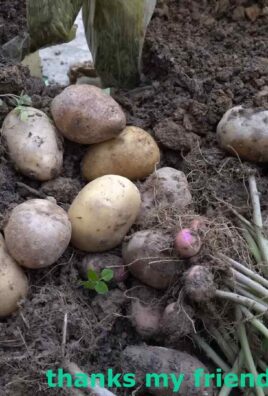
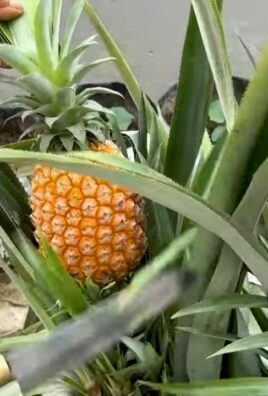
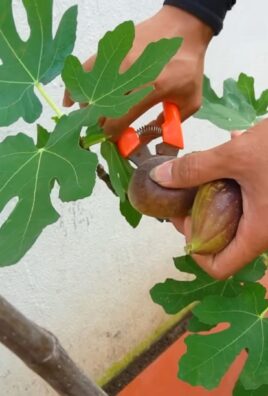
Leave a Comment